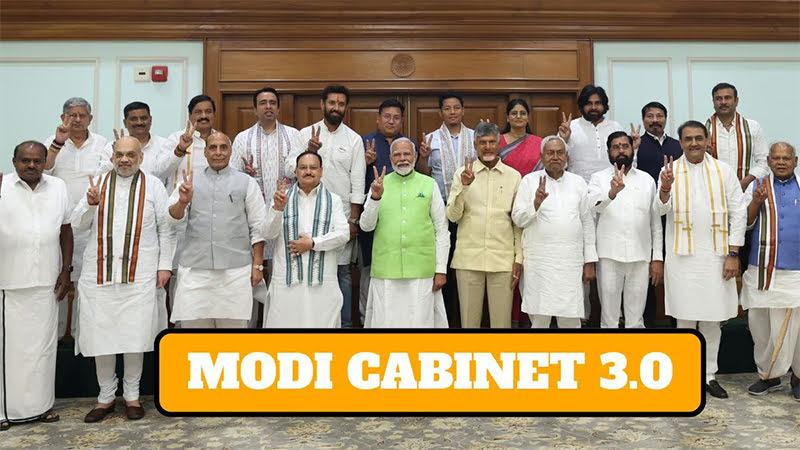The BJP will keep all of the big four cabinet positions for itself. Following the first Cabinet meeting of the new Modi government, the long-awaited allocation of portfolios signals continuity as the NDA 3.0 under PM Modi seeks to maintain the growth momentum and synergy in its third consecutive term at the Centre.
Modi 3.0 Cabinet 2024
On Sunday, Narendra Modi was confirmed as India’s state head for the third time in succession. During a function at the Rashtrapati Bhavan, President Droupadi Murmu regulated the vow of office and mystery to the sturdy of the Bharatiya Janata Party, 73, and individuals from his chamber of pastors. The Modi 3.0 cabinet has 72 ministers, 30 of whom are cabinet ministers, 5 of whom are ministers of state with Independent Charge, and 36 of whom are state ministers.
Check Here:-
Centrelink Payment Schedule July
BJP Leads The Coalition
Modi’s new government makes it clear that the BJP is in control, despite the fact that it does not have a majority and needs allies. Significant services, including home, money, protection, and international concerns, are supposed to stay with the BJP. Without obtaining special category status for Andhra Pradesh and Bihar, the TDP and JD(U) avoided difficult negotiations, which would have likely resulted in increased government funding for their states.
Stable Coalition Anticipated
The government is expected to run smoothly and avoid the frequent disruptions and policy changes that are typical of coalition governments, as allies have accepted the BJP’s dominance in key roles. Six former chief ministers bring valuable administrative and policymaking experience to the council, particularly from large, complicated states. However, the Prime Minister’s Office will continue to be the governing body.
Focus on Upcoming Elections
Ministerial appointments from the states of Haryana, Maharashtra, and Jharkhand, which are up for election this year, suggest that the BJP intends to maintain its successful social engineering strategies. Comments from Praful Patel about not playing a clerical job, made within the sight of BJP pioneers, demonstrate endeavors to keep up with the Maharashtra partnership. Appointments in Jharkhand suggest that non-tribal groups will be helped.
Check Here:-
Influence of Wealthy & Hindu Groups
Despite opposition criticism of “crony capitalism,” the presence of billionaires Gautam Adani and Mukesh Ambani at the swearing-in ceremony demonstrates Modi’s continued ties to major industrialists. The lack of a Muslim minister in Modi’s third government reflects the community’s significant support for the opposition in recent elections.
Caste Combinations
Ministerial positions have been allocated in Prime Minister Modi’s coalition government to address caste dynamics and achieve regional balance. 21 ministers from the general category, 27 from OBC (Other Backward Classes), 10 from SC (Scheduled Caste), 5 from ST (Scheduled Caste), and 5 from minority communities make up PM Modi’s new cabinet.
Public Reaction: Insights into the Oath-Taking Ceremony
Reactions from departing ministers like Anurag Thakur and Smriti Irani emphasize the spirit of democracy and respect for leadership transitions in the midst of the changes. Their warm words for the new government mirror a feeling of solidarity and good faith for what’s to come. This improved on variant gives an unmistakable outline of Modi’s new Cabinet, its needs, and the difficulties ahead, guaranteeing simple comprehension for perusers, everything being equal. With a blend of experienced pioneers and new faces, State leader Modi’s third term expects to proceed with India’s development and improvement. The Council of Ministers is prepared to face new obstacles and effect positive change in the nation.
Check Here:-
Final Words
India as of late seen the swearing-in of Head of the state Narendra Modi for his third term. A sum of 71 pastors made their vows close by Modi, denoting the commencement of Modi 3.0. Rajnath Singh, Amit Shah, and Nirmala Sitharaman, among others, returned from Modi’s previous term, while others remained absent. Let’s investigate the new government’s changes and priorities.
